Haynes LS Series Engine Manual: A Must-Have for Every Builder
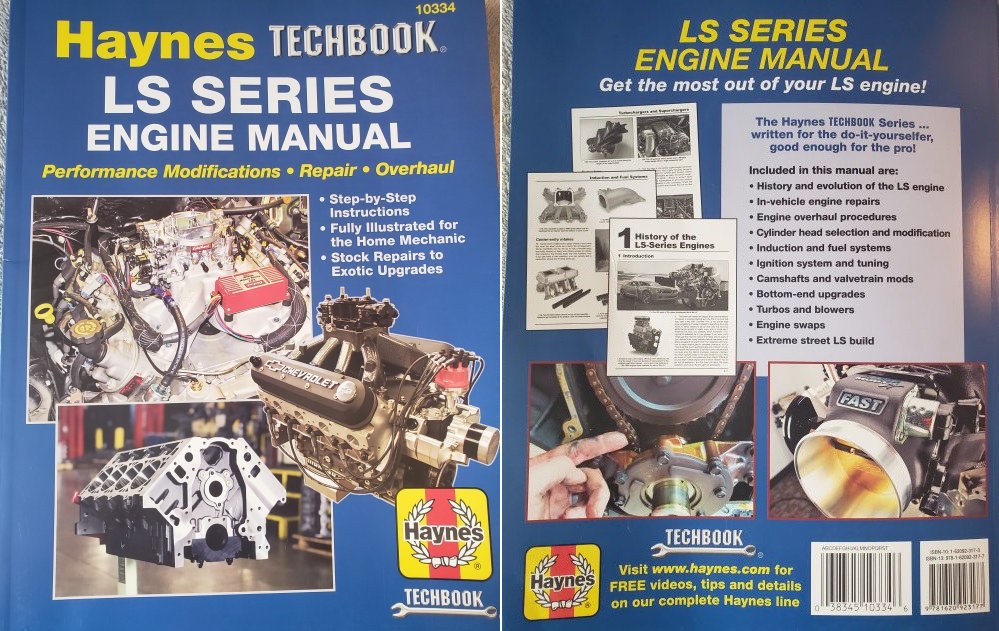
Haynes LS book has everything, from history to detailed build instructions.
The odds are good that if you do much work on your own vehicle, you are familiar with the Haynes brand of automotive manuals. Their traditional books will basically walk you through the complete teardown and rebuild of your vehicle. Those books are designed to help the most novice mechanic perform work on their own vehicle, while also providing information needed by professionals. As a result, Haynes provides manuals for shops and private owners, but their traditional manuals focus on factory-stock vehicles.
A Different Haynes Manual
The Haynes LS Series Engine Manual has all of the basic information on factory-stock LS engines, similar to what you would find in their repair manual for a fourth-generation Camaro. What makes this Haynes book different is that it goes into much greater detail on the engine itself. This includes some history of the LS engine series, a similar teardown section and a series of sections that walk you through every step of modifying your modern GM small block.
In short, this Haynes manual has similar information to their traditional repair manuals, providing every detail needed to rebuild your LS1. However, if you want to install aftermarket components, this book has all the details, with sections that focus on upgrading each key engine area. No matter what type of work you plan to do on your LS engine, this Haynes manual has all of the information that you will need.
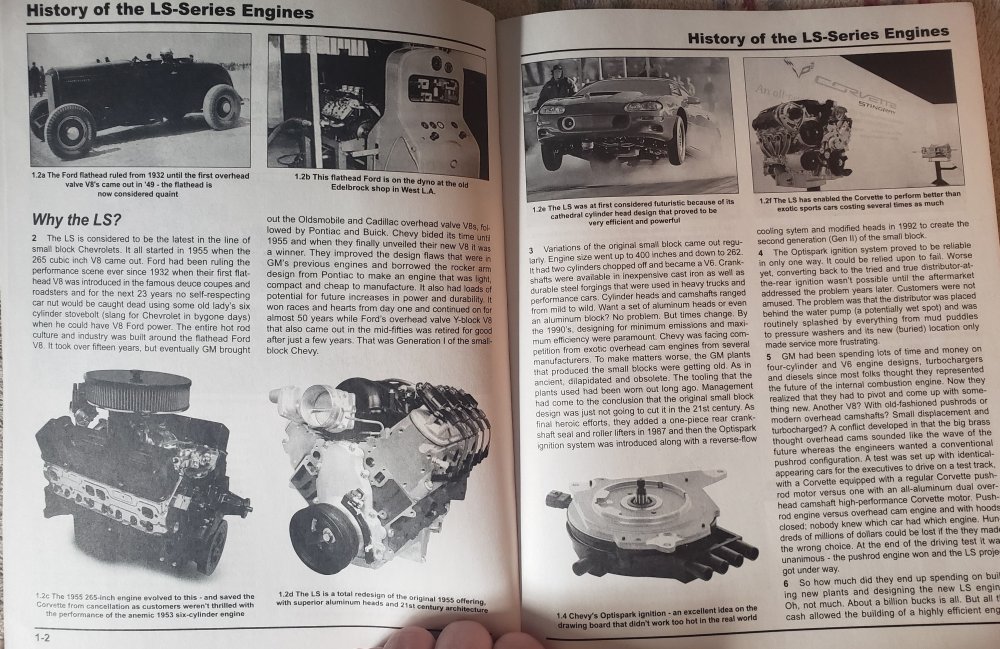
We figure that the people who can make good use of this Haynes LS Series Engine Manual fall into one of three categories. The first is people who have an LS-powered vehicle and who are looking to perform maintenance. The second is people who have an LS-powered vehicle and who are looking to modify it for improved performance. The final is those folks who have some vehicle that didn’t come with an LS engine, but they want to perform a popular LS swap. Everything that folks from those three groups could need to prepare their LS engine is in this book. Below, we take a look at the sections that would benefit each group.
LS Engine Maintenance
If you own an LS-powered vehicle and you are looking to perform your own major maintenance, chapters 2 and 3 will be of the most interest to you.
Chapter 2 focuses on removing and installing each component of the LS engine. It starts with a look at which engine components can be removed with the engine in the car. As you likely know, some jobs will require you to drop the engine out of the vehicle, but some common wear items like the head gaskets, intake gaskets, and water pump can be removed with the engine in place. Chapter 2 then goes on to explain how to find Top Dead Center (TDC) before getting into the really technical information.
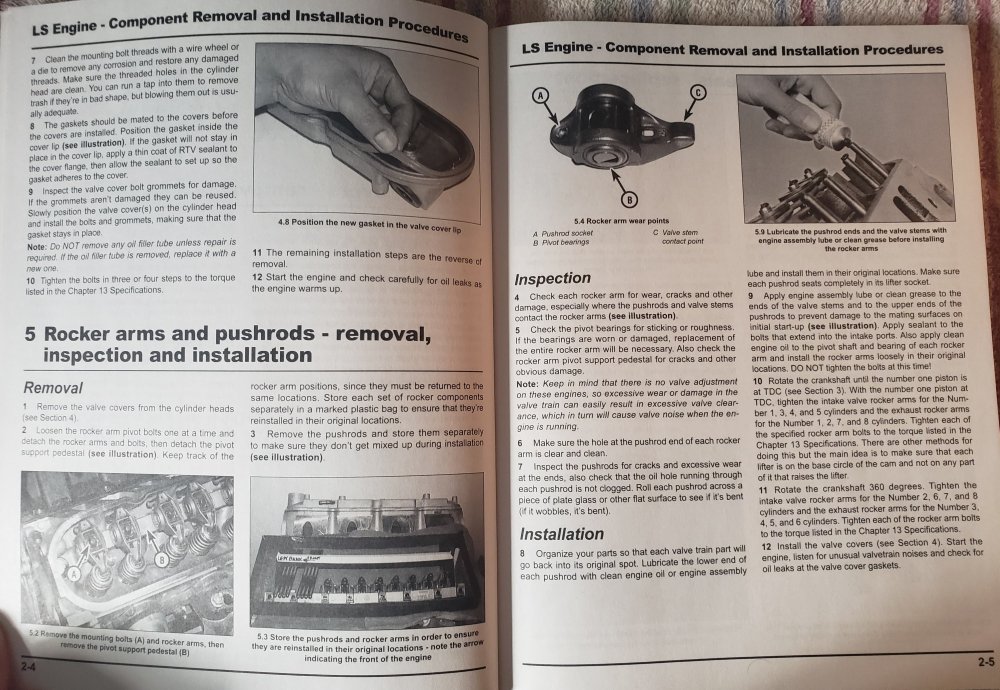
The actual teardown information begins in the fourth section of Chapter 2, with an explanation of how to remove the valve covers. Like every section, the valve covers are discussed from removal to installation, including details on what to do before reinstalling the covers. Section 5 is the first portion of the book that really gets technical, with a thorough look at the rocker arm system. This chapter continues to work its way downward through the engine, showing how to remove the valve springs, then the intake manifold, then the exhaust manifolds, then the cylinder heads themselves. After the top end is apart, the chapter moves onto the components inside of the engine block. Also, Chapter 13 is regularly referenced in this chapter, as that is where you will find all of the key torque measurements for tightening down the nuts and bolts of the engine.
In each section, every step is explained, so provided that you have the tools, this book provides you with the details to completely disassemble and reassemble a stock LS engine. Chapter 3 is titled “General Engine Overhaul Procedures,” but it offers all of the basic diagnostic tips needed to figure out what is wrong with your engine. This begins with a series of tests that can help diagnose problems, such as manually checking the oil pressure, cylinder compression, and vacuum levels.
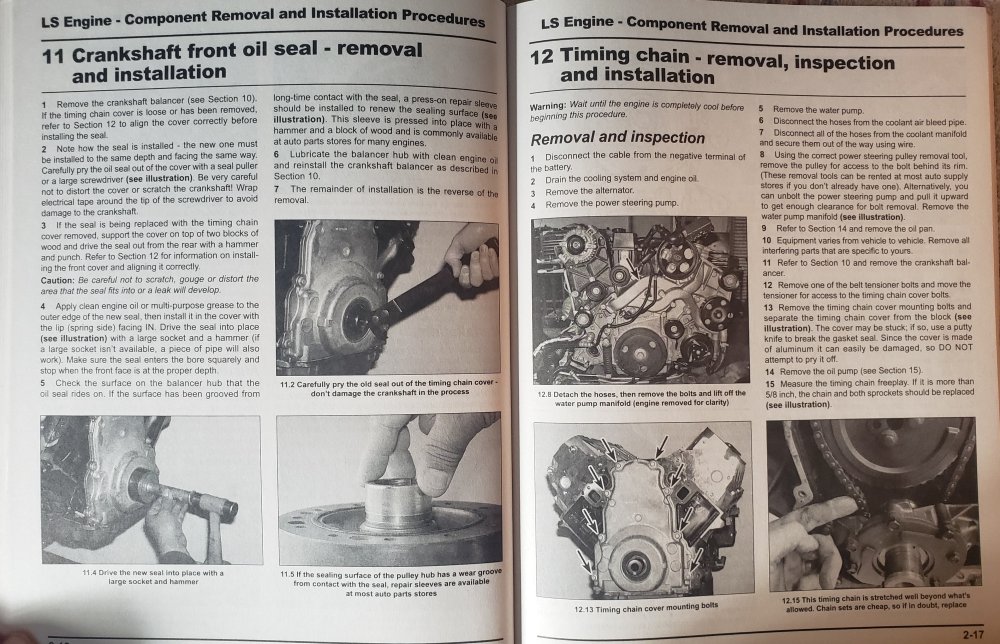
Once you have diagnosed your engine problem, this chapter explains how to remove it from the vehicle. Haynes gives details on how to drop the engine out of the bottom and how to pull it through the top, with tips of how to make the job go a bit easier. The latter sections of Chapter 3 show how to completely disassemble the bottom end of the engine, pictures that show you how to evaluate your engine bearings, and details of how to put everything back together.
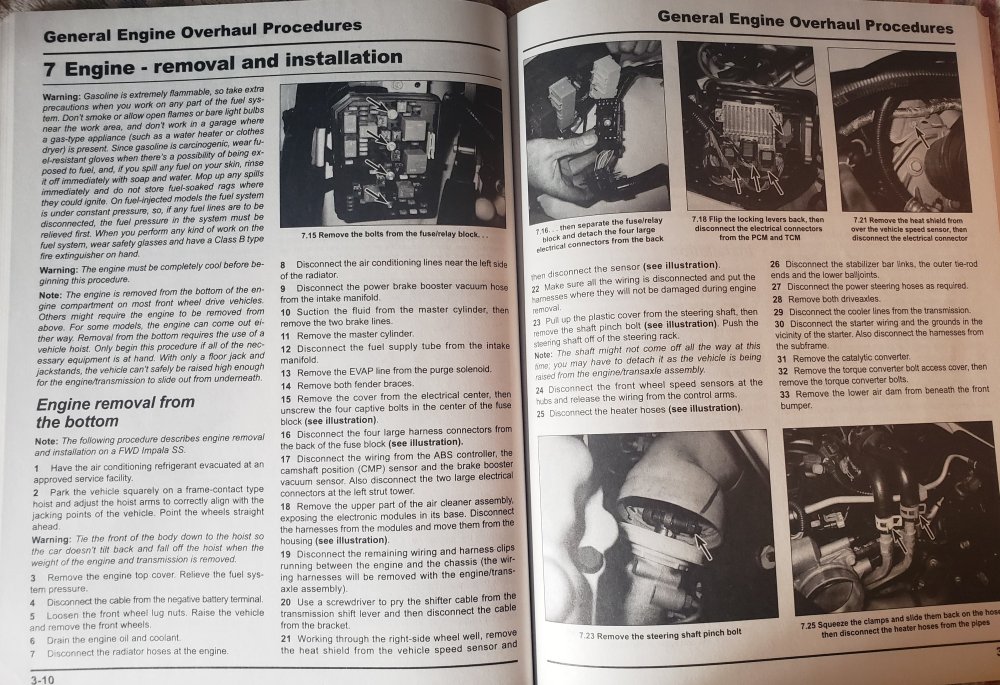
Really, the information provided in Chapters 2 and 3 apply to anyone who is working on an LS engine, whether you are performing maintenance or upgrading. These two chapters have the same type of information that you would expect from a Haynes manual, with remarkable detail and pictures of tough aspects of every job. What makes this Haynes book unique from the rest is what comes next.
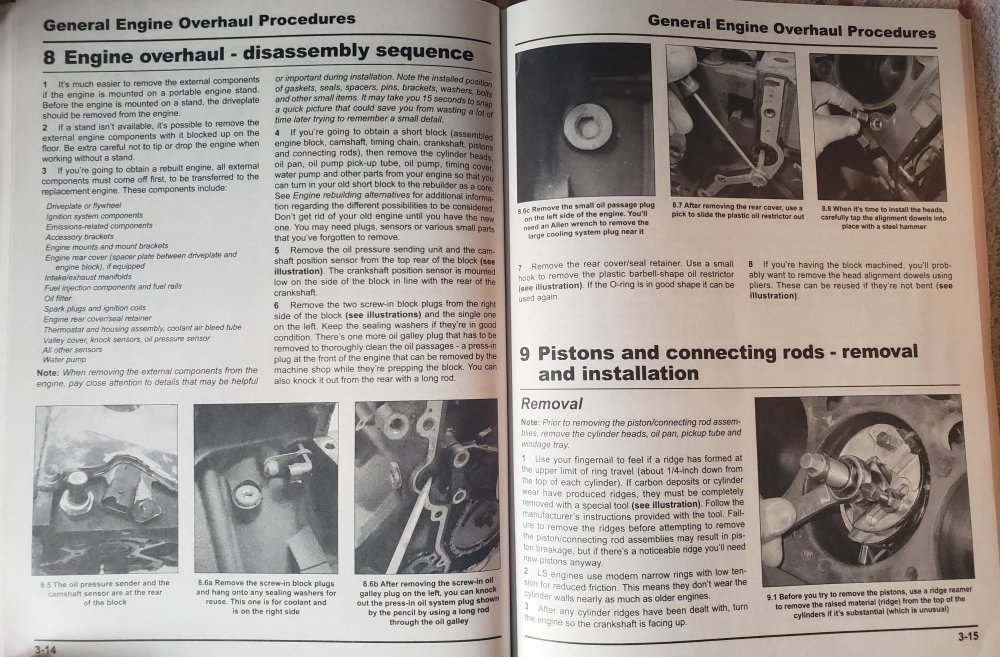
Engine Upgrades: How and Why
Chapters 4 through 9 each look at individual areas of the LS engine. Chapter 4 focuses on Cylinder Heads, Chapter 5 on Induction and Fuel Systems, Chapter 6 is Ignition and Tuning, Chapter 7 is Camshafts and Valvetrain, Chapter 8 is Bottom End and Chapter 9 looks at forced induction.
Each of these sections is not as technical as the previous two, but these chapters explain what each key component does and why upgrading matters. For example, the Cylinder Heads chapter begins with a look at the basic designs of LS heads, followed by more detail on that basic information. You can learn about flow tests, the different factory port designs, aftermarket port designs and the advantages of head porting.
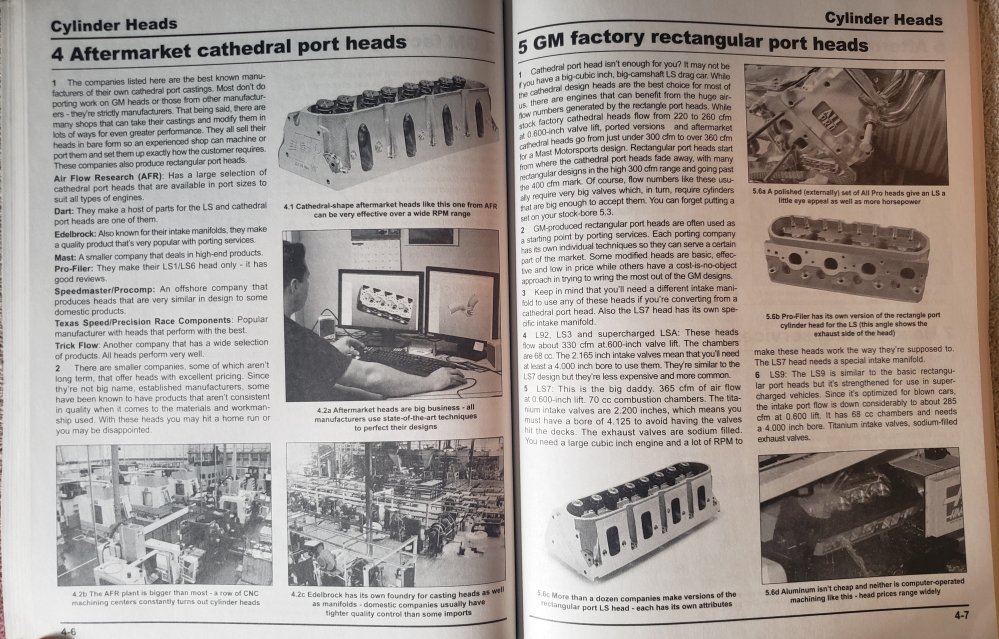
In the Induction and Fuel Systems chapter, we learn about intake manifolds, including a look at all of the most popular aftermarket options. There are several pages of discussion on intake manifolds, followed by a look at throttle bodies, fuel pumps and fuel injectors. Again, these chapters don’t teach you how to remove parts; they teach you why these parts can help make more power.
When you get to the chapter on forced induction, the Haynes LS Series Engine Manual begins with the advantages and disadvantages of turbochargers. Actually, it begins by explaining what a turbocharger is and how it works, so there is truly information in this book for a beginner. The folks at Haynes don’t assume that the reader knows anything, so they provide every bit of detail needed for a successful project.
After explaining all of the key components of the turbocharger setup, including the exhaust, lubrication and relief systems, the book moves onto superchargers. We learn about the different types of superchargers, the advantages of each and pictures of the various types on LS-powered vehicles. This chapter ends with a look at intercoolers and the fuel system upgrades needed to support forced induction.
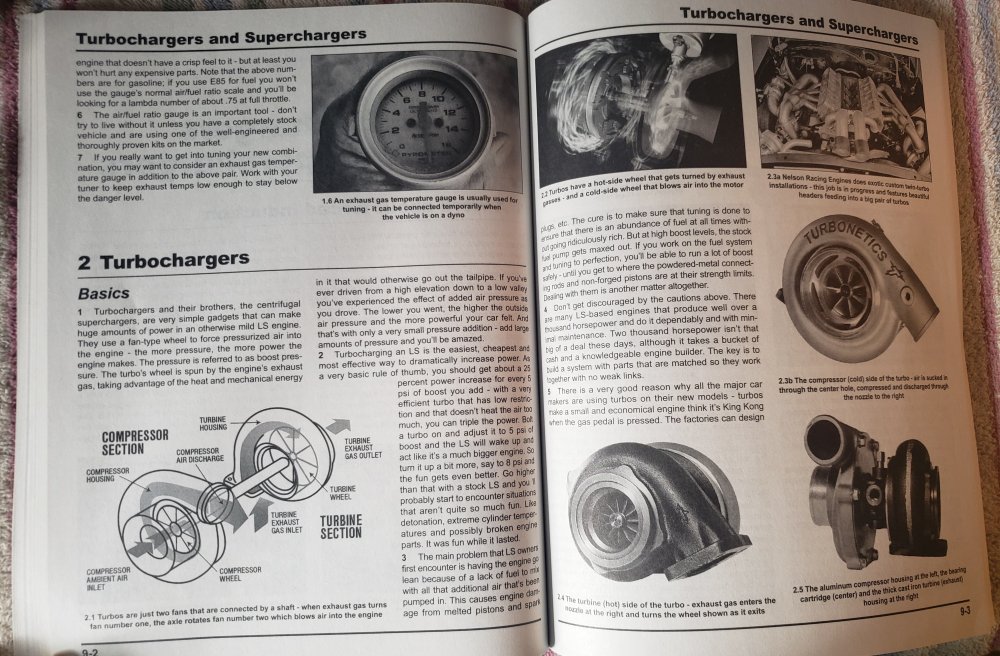
If you have an LS-powered vehicle and you would like to make some upgrades, but you don’t really understand what needs to be upgraded to achieve your goals, this middle portion of the Haynes LS Series Engine Manual will teach you everything that you need to know about the key components of the LS engines. Some of the information in these chapters might be common knowledge to experienced engine builders, but for anyone who simply wants to know more about the internal workings of the LS engine, Chapters 4 through 9 are great resources.
The Engine Swap
Finally, LS engines are easily the most popular to use in off-brand swaps, so Chapter 10 of the Haynes LS Series Engine Manual looks at swap procedures. This chapter begins with explaining why LS swaps are so popular, pointing out that they are physically small, so they fit in tight engine bays. The book also points out why some swaps are a bad idea along with some things to watch for when swapping a powerful LS engine into a vehicle that came with far less power.
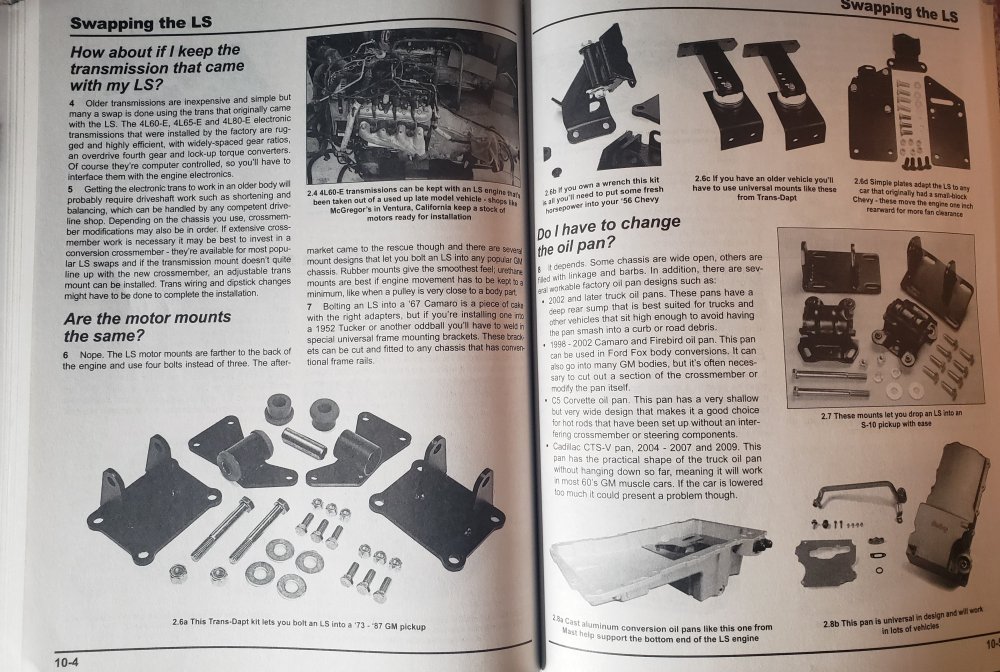
The chapter on LS swaps then looks at things like transmission compatibility, motor mounting issues and oil pan fitment before moving onto “Swap major issues.” This is where the book details concerned with things like proper engine cooling, exhaust systems, wiring headaches and fuel supply. This section ends with a look at the popular LS-based crate engines, both those from GM Performance Parts and those from aftermarket suppliers.
Chapter 11 can also pertain to those looking to swap an LS into a random vehicle, as this chapter focuses on how to build an “LS1 for extreme street duty.” This is basically a step-by-step process of how to tear down an LS1 and build it into a high performance, street-friendly beast.

Finally, Chapter 12 provides some details on how to pick the right speed shop to build your LS engine if you don’t plan to do it yourself and, as mentioned above, Chapter 13 includes all of the torque specs for every nut and bolt on an LS engine.
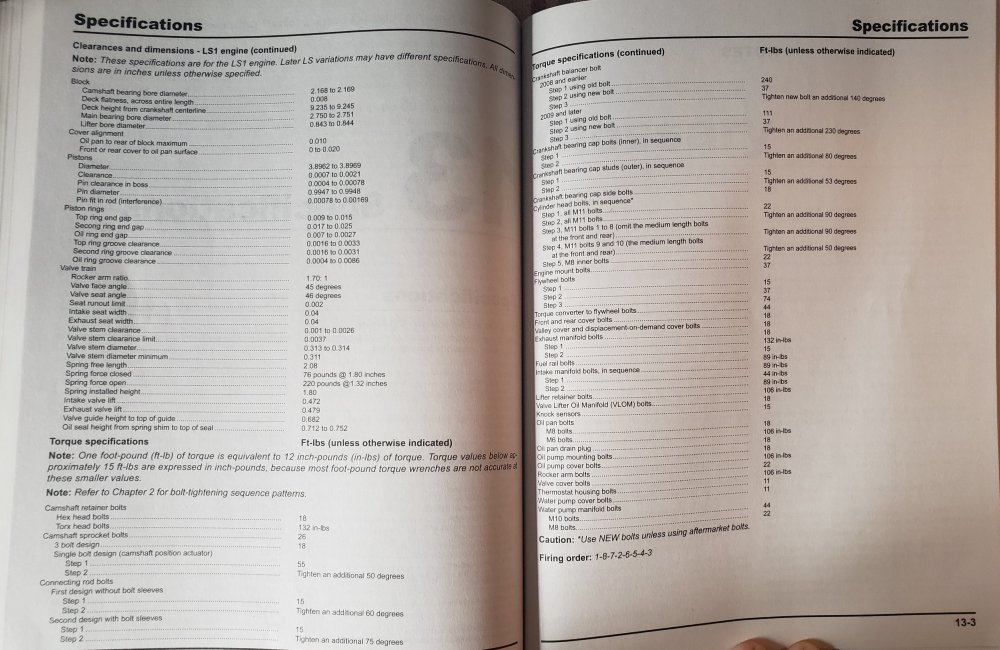
If you plan to do any work on any LS Series engine, the Haynes LS Series Engine Manual is a must-have for novices and experts alike. GM’s LS engines are arguably the easiest from which to make big power and with this book, you can plan your own build – and even do much of the work yourself.
